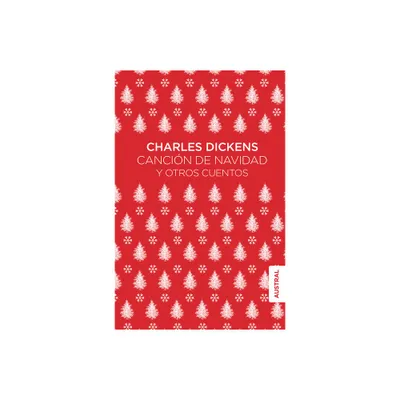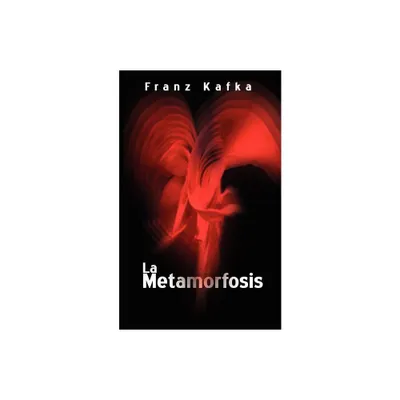Home
La metamorfosis y otros cuentos / The Metamorphosis
Loading Inventory...
Barnes and Noble
La metamorfosis y otros cuentos / The Metamorphosis
Current price: $14.95


Barnes and Noble
La metamorfosis y otros cuentos / The Metamorphosis
Current price: $14.95
Loading Inventory...
Size: Hardcover
*Product Information may vary - to confirm product availability, pricing, and additional information please contact Barnes and Noble
Edición especial en tapa dura de
La metamorfosis
, la obra capital de Franz Kafka, seguida de otros dos relatos inolvidables: «La condena» y «El fogonero»
La transformación de Gregor Samsa en un bicho monstruoso, similar a un enorme escarabajo, es uno de los hitos de la literatura universal. En esta edición, la obra más conocida del genial escritor checo,
, se recoge con otros dos relatos suyos, «La condena» y «El fogonero», tres obras que el propio Kafka planeó publicar juntas, sin llegar a concretarlo. Las tres son un fiel ejemplo de la maestría literaria de Kafka y de su impecable tratamiento de temas universales: la familia, la identidad, la pequeñoburguesía, el dinero y los deberes filiales.
ENGLISH DESCRIPTION
A special hardcover edition of
Metamorphosis,
Franz Kafka's most significant work, followed by two other unforgettable stories: " The Judgment " and "The Stoker".
“As Gregor Samsa awoke one morning from uneasy dreams, he found himself transformed in his bed into a gigantic insect. He was laying on his hard, as it were armor-plated, back and when he lifted his head a little, he could see his domelike brown belly divided into stiff arched segments on top of which the bed quilt could hardly keep in position and was about to slide off completely. His numerous legs, which were pitifully thin compared to the rest of his bulk, waved helplessly before his eyes.”
—Opening lines of
Metamorphosis
, by Franz Kafka
is a German novella written by
Franz Kafka
which was first published in 1915. One of Kafka's best-known works,
tells the story of salesman Gregor Samsa, who wakes one morning to find himself inexplicably transformed into a huge insect and subsequently struggles to adjust to this new condition. The novella has been widely discussed among literary critics, with differing interpretations being offered. In popular culture and adaptations of the novella, the insect is commonly depicted as a cockroach or a beetle.
La metamorfosis
, la obra capital de Franz Kafka, seguida de otros dos relatos inolvidables: «La condena» y «El fogonero»
La transformación de Gregor Samsa en un bicho monstruoso, similar a un enorme escarabajo, es uno de los hitos de la literatura universal. En esta edición, la obra más conocida del genial escritor checo,
, se recoge con otros dos relatos suyos, «La condena» y «El fogonero», tres obras que el propio Kafka planeó publicar juntas, sin llegar a concretarlo. Las tres son un fiel ejemplo de la maestría literaria de Kafka y de su impecable tratamiento de temas universales: la familia, la identidad, la pequeñoburguesía, el dinero y los deberes filiales.
ENGLISH DESCRIPTION
A special hardcover edition of
Metamorphosis,
Franz Kafka's most significant work, followed by two other unforgettable stories: " The Judgment " and "The Stoker".
“As Gregor Samsa awoke one morning from uneasy dreams, he found himself transformed in his bed into a gigantic insect. He was laying on his hard, as it were armor-plated, back and when he lifted his head a little, he could see his domelike brown belly divided into stiff arched segments on top of which the bed quilt could hardly keep in position and was about to slide off completely. His numerous legs, which were pitifully thin compared to the rest of his bulk, waved helplessly before his eyes.”
—Opening lines of
Metamorphosis
, by Franz Kafka
is a German novella written by
Franz Kafka
which was first published in 1915. One of Kafka's best-known works,
tells the story of salesman Gregor Samsa, who wakes one morning to find himself inexplicably transformed into a huge insect and subsequently struggles to adjust to this new condition. The novella has been widely discussed among literary critics, with differing interpretations being offered. In popular culture and adaptations of the novella, the insect is commonly depicted as a cockroach or a beetle.


















